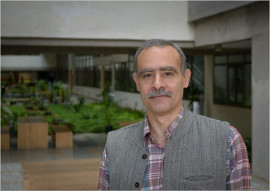Computational and Experimental approaches to Memory and Plasticity
When we remember things, we activate an extensive array of events in the brain. Sensory input triggers whole-brain activity, which cascades through networks of brain cells. A torrent of electrical and chemical signals is launched in each cell, giving rise to changes in structures and connections between cells.
A key aspect of memory is the ability to relate events that occur in sequences, such as landmarks, music, movements, or words in a sentence. We study how such sequences are formed during learning, how sequences cause changes in cells and connections, and how molecular and electrical signals encode and sustain memories.
In vivo, we use 2-photon imaging of hippocampal activity in mice to see how time is encoded during rhythmic stimuli and separated stimuli. We can literally watch brain activity during learning, to see how sequences in the real world map to sequences in the brain. We find that time is encoded through sequences of activity but is highly dependent on the task demands.
In vitro, we use optogenetics in mouse brain slice to deliver precise patterned stimuli to the hippocampal network while monitoring responses. We have characterized heterogeneity and stochasticity in memory processes, and have explored how single cells can detect mismatches in sequences of spatiotemporal input patters.
In silico, we are developing a synaptic signaling atlas using high-throughput mass-spectrometry data to measure the time-course of responses of thousands of proteins following stimulation. We build a range of models of synapses in health and disease using an array of tools we have developed to manage, access, and analyze the data. We use the data and models to examine what processes underlie the overlapping cell and network dysfunction in aging, psychiatric disease, and neurodevelopmental disorders.
In related work we participate in the activities of the Centre for Brain and Mind (
CBM) and we are closely involved in developing the
CALM-Brain database which collates the unique multimodal and longitudinal dataset arising from this study.
These projects combine experiments and multiscale modeling spanning molecules to networks. To carry out these simulations, we have developed a major simulation tool called MOOSE, the Multiscale Object Oriented Simulation Environment.



